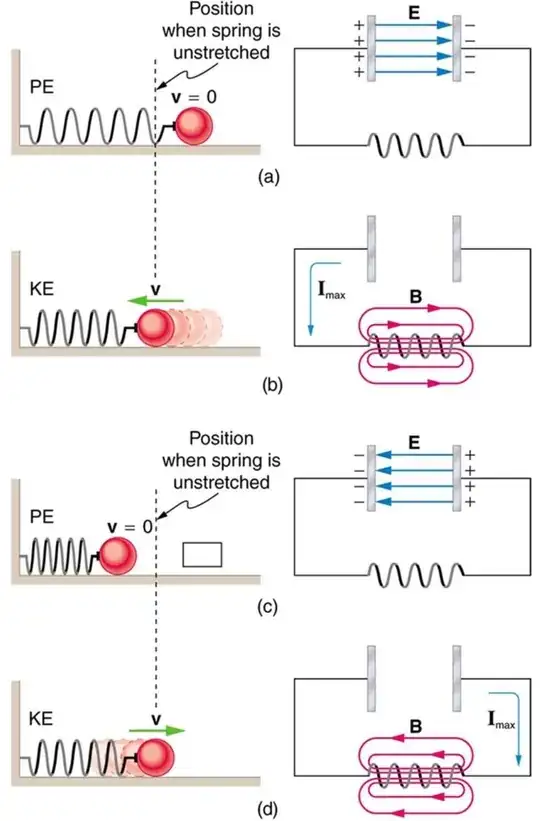You seem to have implied that the capacitor is both simultaneously discharging and charging.
With the capacitor fully charged an inductor is connected across the capacitor thus completing an electrical circuit.
The capacitor starts to discharge and a current starts to flow but its rate of increase is hindered by the back emf produced by the inductor.
So basically you have electrons moving from the negative plate of the capacitor to the positive plate of the capacitor thus the capacitor starts to discharge.
This continues and it so happens that when the current in the circuit reaches a maximum the capacitor is completely discharged.
Even though the capacitor is fully discharged there are electrons in motion in the circuit and these electrons cannot stop instantaneously as they have a mass and that would require an infinite force to act on them.
So the current continues to flow in the same direction and the capacitor start to charge with the opposite polarity.
This continues until the capacitor has the same charge but opposite polarity as at the start.
Then the sequence starts all over again with the current now flowing in the opposite direction.
In terms of energy you can think of it as an oscillation of the energy stored in the electric field of the capacitor and the energy stored in the magnetic field of the inductor.
Here is a diagrammatic representation also showing the more familiar oscillation of a spring and mass system.

You can think of the inductor as the mass and the capacitor as the spring in this analogy.
